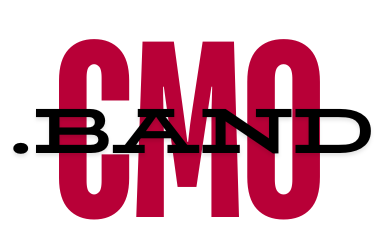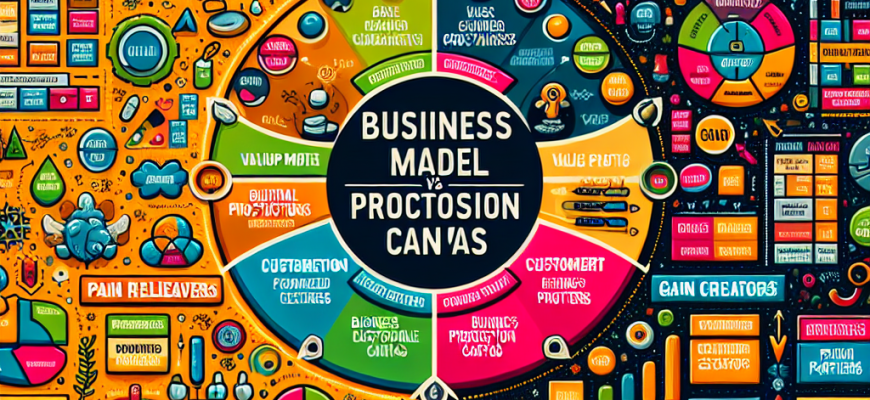Exploring the Differences: Business Model Canvas Versus Value Proposition Canvas
In the dynamic world of startups and established businesses alike, understanding the frameworks that lay the foundation for successful strategies is paramount. Two such frameworks, the Business Model Canvas (BMC) and the Value Proposition Canvas (VPC), have emerged as essential tools for entrepreneurs and business leaders. While they share some similarities, their distinct purposes and applications set them apart. Let’s delve into the nuances of these frameworks to uncover how they can individually and collectively contribute to a business’s success.
The Essence of the Business Model Canvas
Developed by Alexander Osterwalder, the Business Model Canvas offers a comprehensive overview of a business’s structure, encompassing nine key components: Key Partners, Key Activities, Key Resources, Value Propositions, Customer Relationships, Channels, Customer Segments, Cost Structure, and Revenue Streams. This visual chart encourages businesses to delve into each aspect, ensuring a holistic approach to understanding and strategizing business operations.
The BMC is particularly effective for startups and existing businesses looking to refine or pivot their business model. It serves as a strategic management template for developing new or documenting existing business models. By dissecting the business into these nine areas, leaders can identify potential inefficiencies, explore new market opportunities, and strategically align their operations to their overarching goals.
The Value Proposition Canvas: Zooming In on the Customer
While the BMC provides a bird’s-eye view of the business, the Value Proposition Canvas, also developed by Osterwalder, zooms in on two specific segments of the BMC: the Value Propositions and the Customer Segments. The VPC is designed to ensure that a product or service fits the customer’s needs and desires. It is divided into two sections: the customer profile and the value map.
The customer profile helps businesses understand their customers’ jobs, pains, and gains, while the value map allows them to outline how their products or services create value by relieving pains and creating gains for their customers. This focused approach helps businesses tailor their offerings to meet the specific needs of their target market, ensuring that their value proposition is both compelling and relevant.
Distinguishing Between the Two
The primary distinction between the BMC and the VPC lies in their scope and focus. The BMC provides a broad overview of the business, covering various operational, financial, and strategic elements. In contrast, the VPC hones in on the relationship between the business’s value proposition and its customer segments, offering a deep dive into how a business can meet the needs of its customers.
Another key difference is their application in the business planning process. The BMC is often used at the initial stages of business planning, helping entrepreneurs and business leaders map out the fundamental aspects of their business. On the other hand, the VPC is typically used after a business has a clear understanding of its overall model, focusing on refining and enhancing the value proposition to better serve its customers.
Synergizing the BMC and VPC for Comprehensive Strategy Development
While the BMC and VPC serve different purposes, they are not mutually exclusive. In fact, using them in tandem can provide a comprehensive framework for business strategy development. Starting with the BMC allows businesses to establish a broad understanding of their operational and strategic landscape. Following this with the VPC enables a deeper exploration into how the business can uniquely meet the needs of its target market.
This synergistic approach ensures that businesses are not only well-structured internally but are also externally focused on delivering value to their customers. It bridges the gap between operational efficiency and customer satisfaction, paving the way for sustainable growth and competitive advantage.
Navigating the Path to Success
In conclusion, both the Business Model Canvas and the Value Proposition Canvas are invaluable tools in the arsenal of modern entrepreneurs and business leaders. Understanding the differences and applications of each framework is crucial for effectively navigating the complex landscape of business strategy development.
By leveraging the BMC to gain a comprehensive overview of the business and the VPC to zoom in on creating compelling value propositions, businesses can ensure that they are not only operationally sound but also perfectly aligned with the needs and desires of their customers. This dual approach fosters a culture of innovation, customer-centricity, and strategic agility, which are essential ingredients for success in today’s competitive business environment.
Whether you’re at the helm of a startup or leading an established company, integrating the BMC and VPC into your strategic planning process can illuminate the path to achieving your business goals. Remember, the journey to business success is both an art and a science, requiring a balance of broad strategic vision and focused customer insights.

A seasoned digital marketing strategist with over 8 years of experience across various areas of digital marketing, including SEO, SMM, PPC, content marketing, and email marketing. Specializes in transforming B2B, B2C, e-commerce, and SaaS businesses by creating effective go-to-market strategies and building thriving digital ecosystems. Known for a data-driven approach to optimizing campaigns and maximizing results.
“If your business is looking to scale or in need of a fresh perspective, feel free to contact”.




